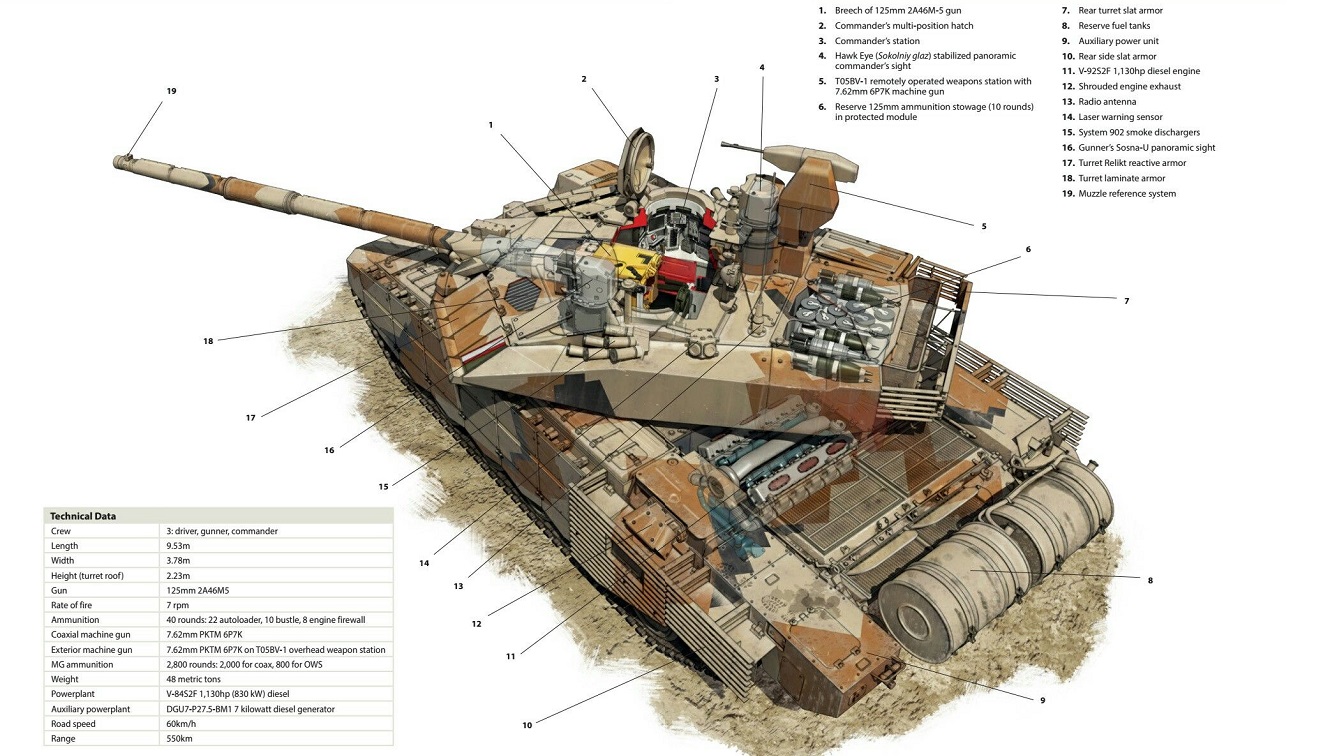It is often said that the crews of a tank “never knew what hit them” when their vehicle is destroyed in combat.
That is probably true if the hit comes by way of an artillery strike, a round from an opposing tank, or a man-portable anti-tank weapon.
The crew has little or no time to react before the ordnance hits the vehicle.
The same isn’t exactly true, though, when it comes to first-person view (FPV) loitering munitions, more commonly known as kamikaze drones.
In many cases, the crew can hear and see the approaching vehicle. Destruction and likely death come too swiftly to be evaded, but slowly enough that the final moments are of absolute terror.
Russian Tank Destroyed by Dive Bombing Kamikaze Drone
This week, a Ukrainian FPV kamikaze drone struck a Russian tank, reportedly in Southern Ukraine. The action was reportedly carried out by units of the Ukrainian 23rd Separate Rifle Battalion. A nearly minute-long clip showing the loitering munition as it tracks and hits the tank was shared by Ukrainian Front (@front_ukrainian).
Cheap But Effective
Both sides use loitering munitions in the war in Ukraine. Russia’s Lancet drones have proven to be one of the Kremlin’s most successful military platforms, and they are a menace to Kyiv’s forces. While still far cheaper than the tanks and armored vehicles that these kamikaze drones disable or destroy, the Lancet is fairly expensive at $35,000 each.
Ukraine went in another direction. Small teams began to modify racing drones into efficient weapons that can destroy a tank or other vehicle. Kyiv had the early advantage in the UAV arms race due to its culture of small tech startups, but Russia is catching up by employing its own artisanal drone makers, Forbes reported this week. So far, the kit-bashed Russian FPV drones have been cruder and smaller than their Ukrainian counterparts, but that is rapidly changing. Meanwhile, ZALA, which produces the Lancet, has announced plans to triple production.
Air Defenses Will Have to Catch Up
Of course, every new weapon system spurs the development of countersystems, and loitering munitions will take a heavy toll on troops and equipment until air defenses catch up. Solutions could include electronic countermeasures that disrupt the communications between an unmanned aerial system and its operator, and here Russia is already ahead.
As Ukraine has struggled to counter the Lancet and other FPV drones, Kyiv’s forces have gotten creative by using metal mesh tarps as a form of reactive armor over artillery and forward observation posts. This can make it harder for a drone to target the positions.
Another seemingly low-tech option involves a shotgun with the right load in the chamber. Soldiers armed with the weapons are now reportedly standing guard and aiming at the drones. While it would be similar to trap and skeet or even duck hunting, the consequences for a missed shot are obviously much deadlier. That’s still better than hoping to outrun it — the shotgun would at least give the defender a fighting chance.
⚡️The ????????Ukrainian military damaged a ????????Russian tank using an FPV kamikaze drone. The work of the 23rd separate rifle battalion pic.twitter.com/bK7juq0jaW
— ????????Ukrainian Front (@front_ukrainian) July 27, 2023
Author Experience and Expertise
A Senior Editor for 19FortyFive, Peter Suciu is a Michigan-based writer. He has contributed to more than four dozen magazines, newspapers, and websites with over 3,200 published pieces over a twenty-year career in journalism. He regularly writes about military hardware, firearms history, cybersecurity, politics, and international affairs. Peter is also a Contributing Writer for Forbes and Clearance Jobs. You can follow him on Twitter: @PeterSuciu.

